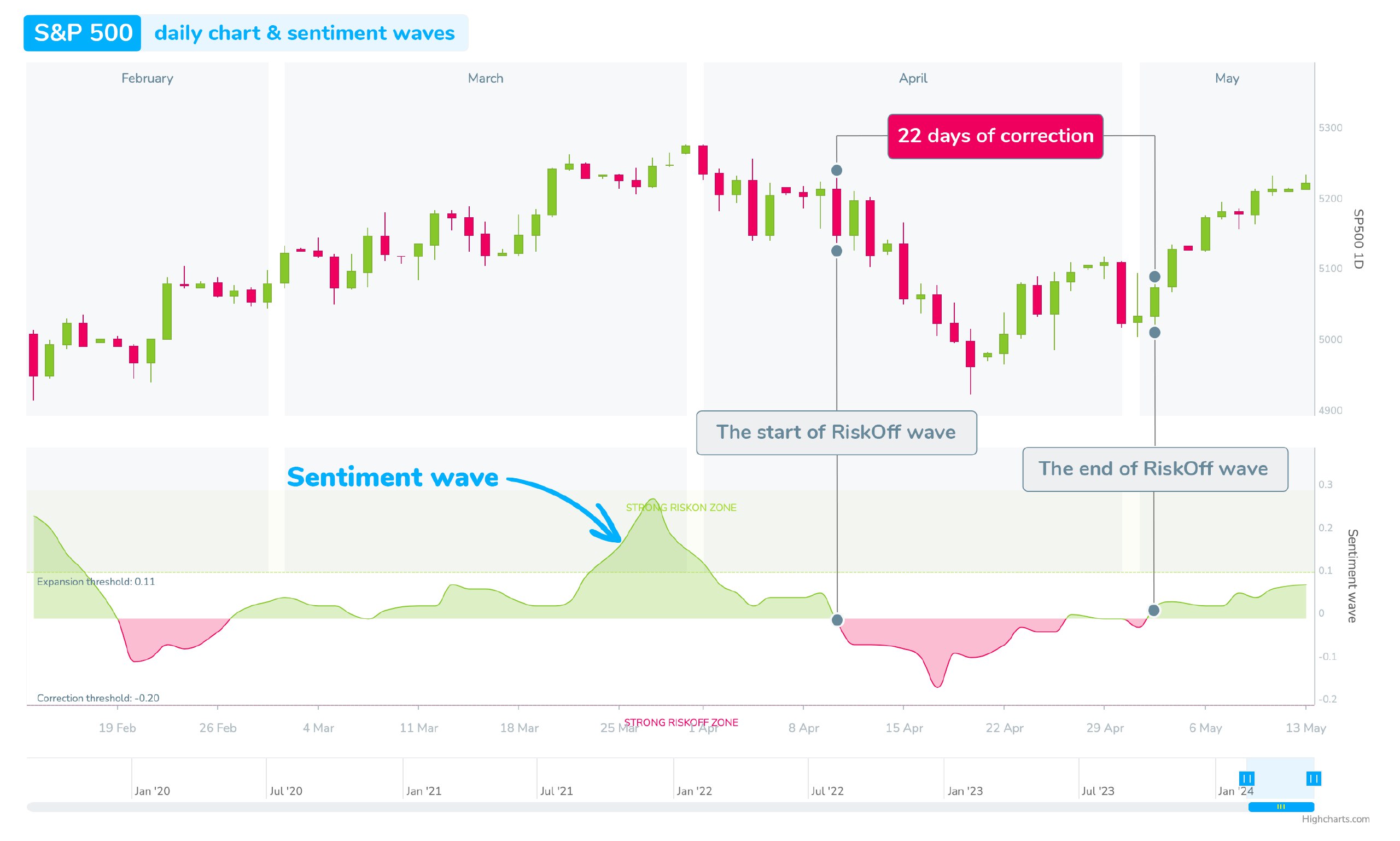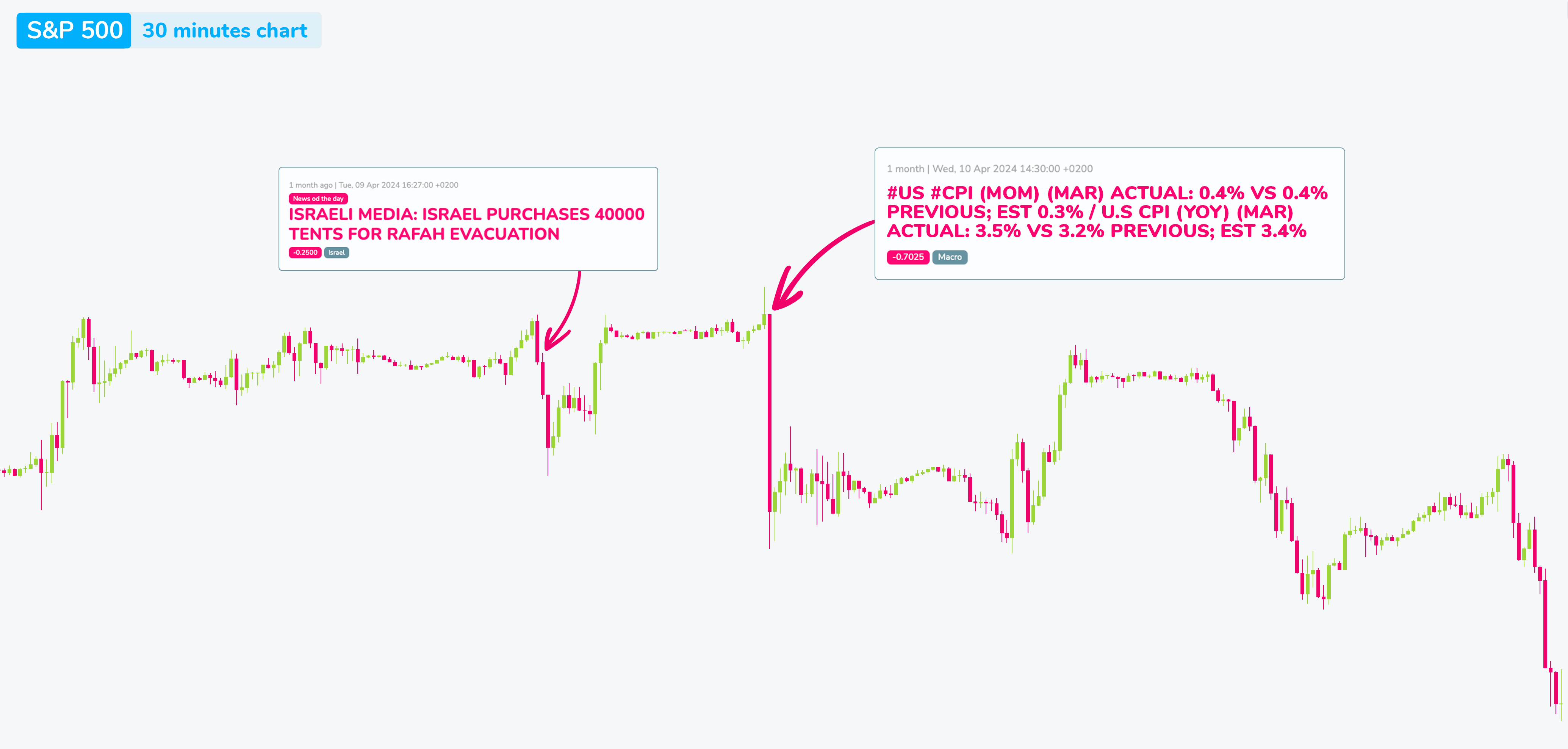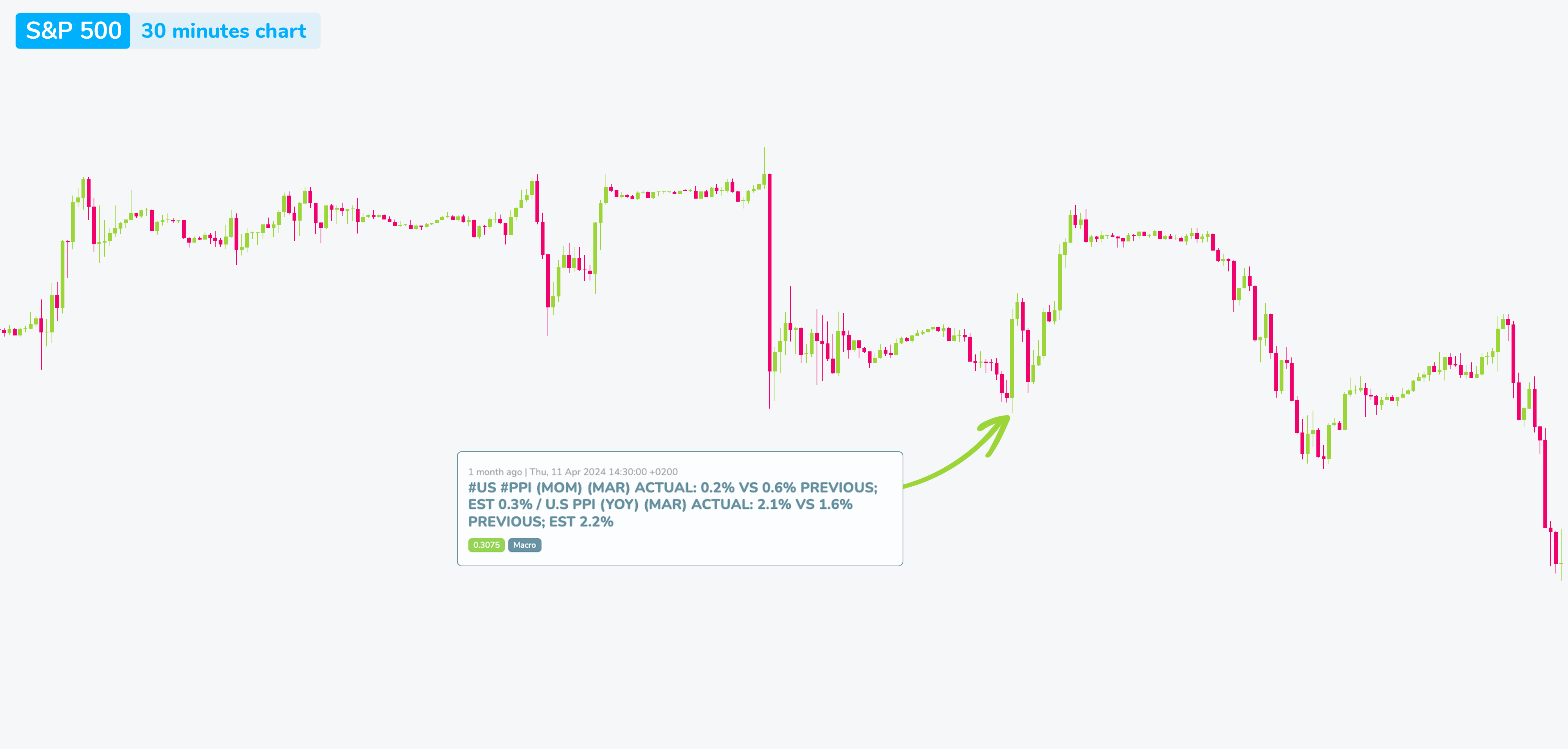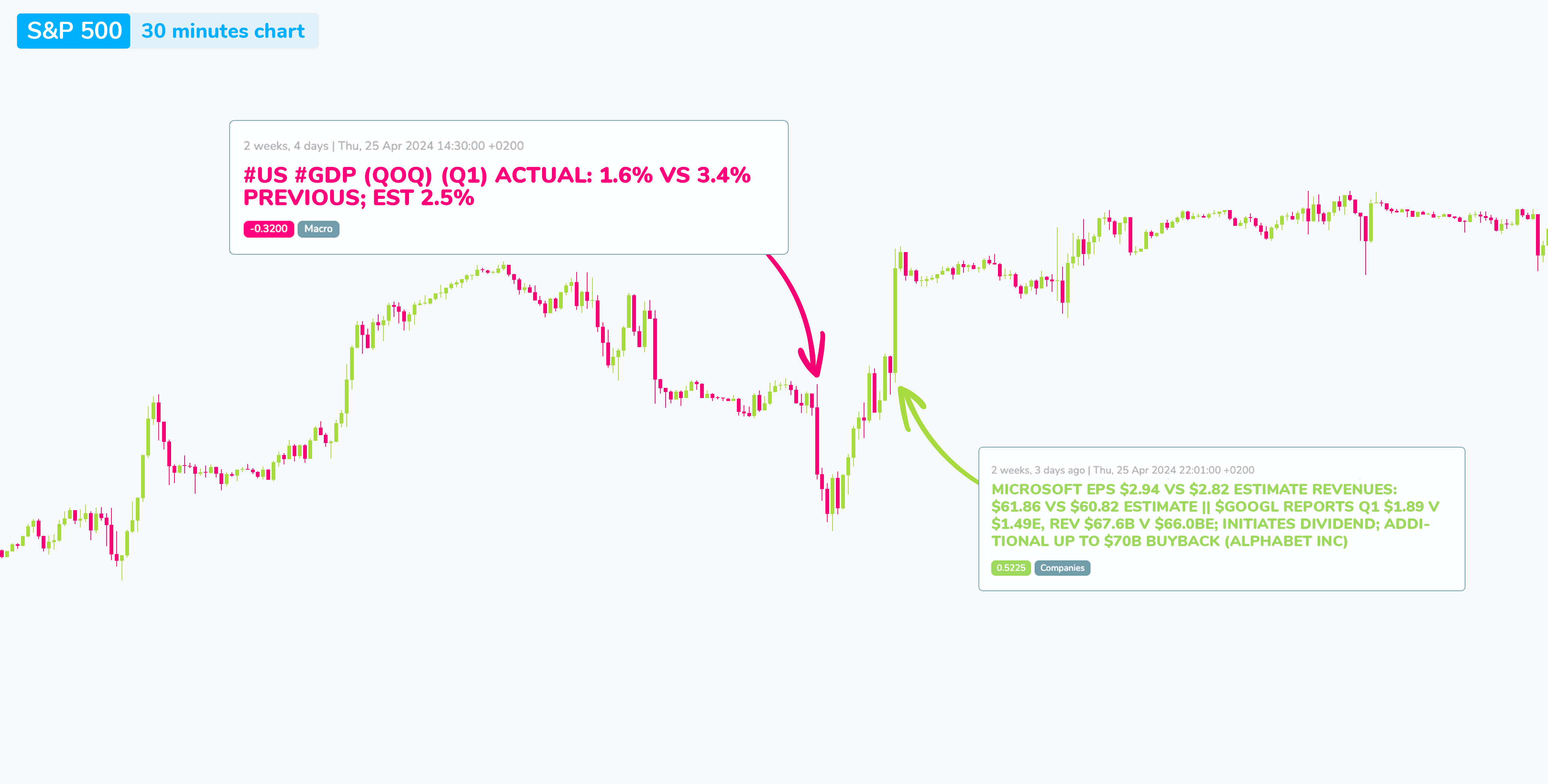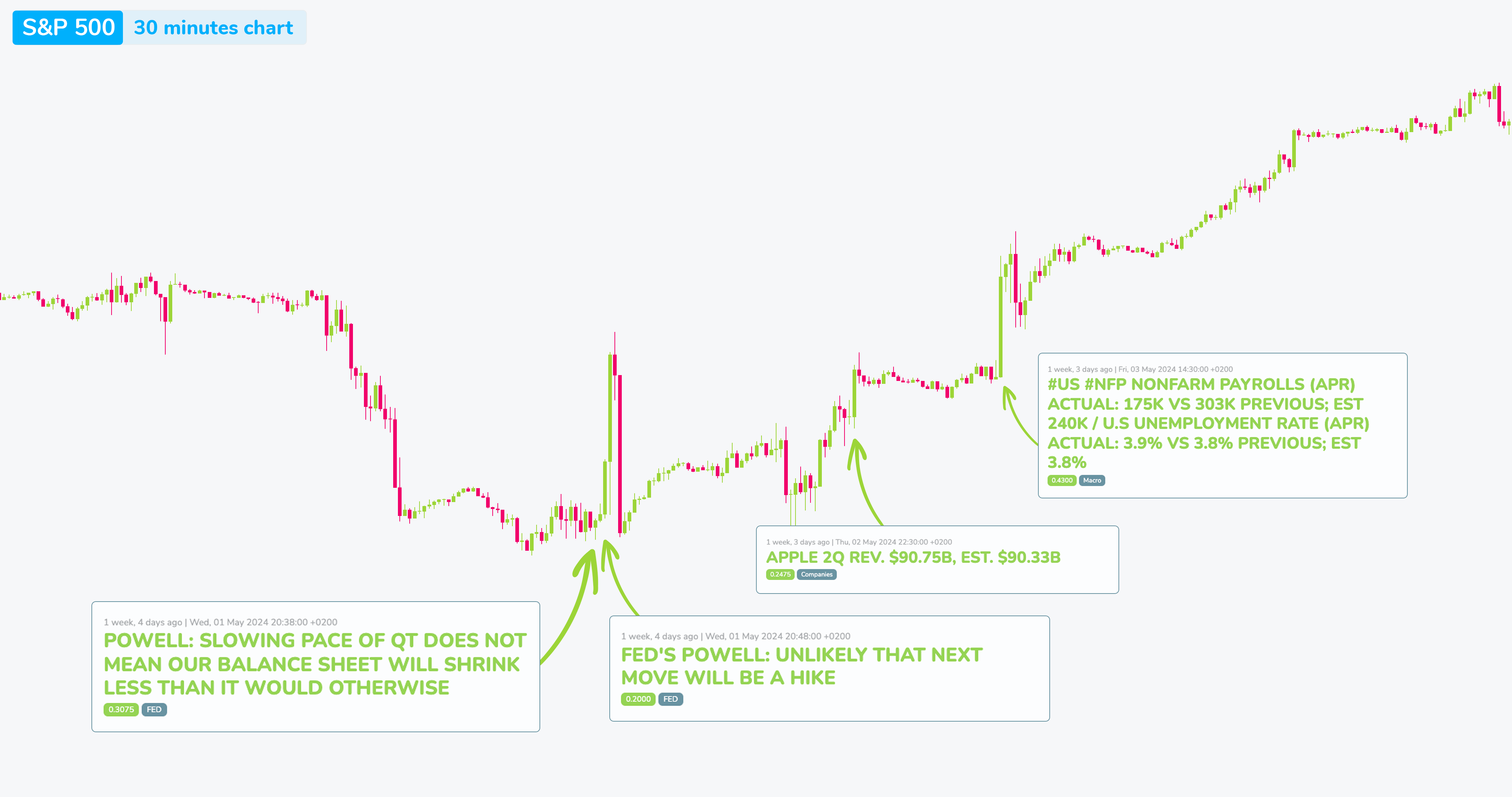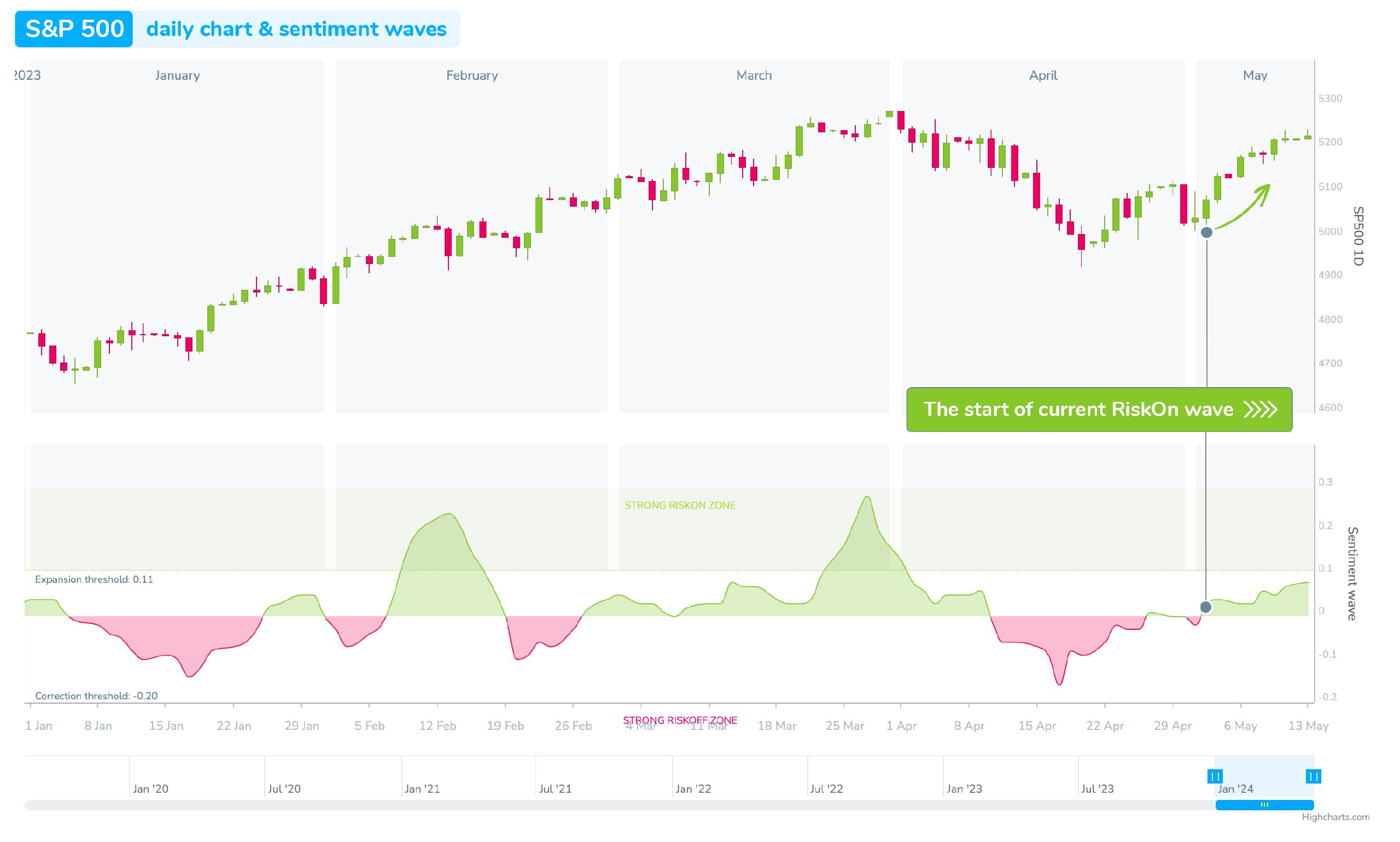May 14, 2024 | Sentiment overview
The recent RiskOff wave of sentiment commenced on April 10 and concluded on May 2, spanning 22 days and resulting in a 320-point decline in the S&P 500 futures, approximately a 6% drop. Let’s delve into the specifics of this period. What triggered it? What factors sustained the RiskOff sentiment, and what ultimately led to its reversal?
The latest downturn in market sentiment indicator, dubbed the RiskOff wave, began on a seemingly ordinary Wednesday, April 10, 2024. But this day was anything but ordinary as it marked the end of a sustained positive market vibe. The trigger was the unexpected acceleration of the U.S. inflation rate for March (CPI), which not only defied expectations but also managed to shift the market mood from sunny to stormy overnight. This inflation update was undoubtedly the year’s market-shaker, wielding enough clout to single-handedly flip the market sentiment.
However, it’s rare for a single catalyst to drive the depth and duration of a RiskOff wave, rather the sentiment wave is a result of more topics impacting the market. This round was no exception, as disappointing U.S. CPI figures were just the tip of the iceberg. Additional unsettling news items also fed into the negative sentiment stew, creating a perfect storm of market anxiety.
The eve of the inflation announcement already set the market on edge with news of Israel’s purchase of 40,000 tents—a move that the market interpreted as a prelude to a potential escalation in the Gaza conflict. This purchase, intended for evacuating Palestinian civilians from Rafah, signaled a possible full-scale military invasion by the IDF, adding fuel to the already simmering geopolitical tensions.
The negative sentiment deepened even further on April 10 when Hamas announced it no longer held the 40 Israeli hostages previously seen as essential for any basic peace negotiation. Market hysteria typically accompanies such dramatic shifts in sentiment, with investors quick to react to negative developments.
That same day, the market also reacted sourly to the U.S. bond sale and the Bank of Canada’s decision to maintain its interest rates at 5%. Disheartened by the U.S. CPI data and other distressing events, the market took the Bank of Canada’s decision as a signal of enduring high rates, exacerbating the negative sentiment.
Even U.S. Producer Price Index (PPI) figures for March, which slightly tempered the negative impact of the CPI data, couldn’t reverse the RiskOff. Generally, during a RiskOff period, markets exhibit increased volatility, and this scenario was no exception. The freshly minted RiskOff phase remained unaltered by the PPI figures, as the overall market sentiment continued to trend negative.
For market sentiment to sustain itself in either positive or negative territory, it needs a steady stream of corresponding news; without it, sentiment tends to evaporate, akin to the market’s memory effect. In this instance, the RiskOff continued and even intensified a week later due to new information about U.S. tariffs on Chinese steel imports and reports of a planned Iranian retaliation against Israel, further dampening spirits.
Another week down the line, the market awaited Q1 2024 results from META. Despite exceeding nearly all expectations, the market response was lukewarm at best on April 24, due primarily to concerns about the future pace of returns on AI investments, as highlighted in META’s earnings report.
On Thursday, April 25, investors were poised for the “royal macro data” U.S. GDP figure for Q1 2024. The actual growth of 1.6%, starkly under the anticipated 2.5%, led to a sharp market decline and prolonged the RiskOff period. Yet, that same day signaled a potential shift back to RiskOn, powered by notably strong earnings reports from Microsoft and Alphabet, which were met with market enthusiasm. Following these events, the Moodix index rose above both moving averages, hinting that the RiskOff wave might not wreak extensive damage after all.
The definitive end to the negative market sentiment wave came in the following week, starting with positive reactions to Amazon’s results on Tuesday, April 30. The next day, the Federal Reserve held rates steady and scaled back its quantitative tightening, with Jerome Powell assuring at a press conference that further rate hikes were highly unlikely despite delays in anticipated rate cuts.
On Thursday, May 2, the market cheered Apple’s Q1 results, which, despite a forecasted drop in phone sales in China, showed robust overall revenues and exceeded key financial expectations.
Finally, the conclusive shift to a RiskOn sentiment was cemented by Friday’s (May 3) U.S. labor market data. The Non-farm payroll figures indicated a cooling of the labor market, a long-anticipated development, which the market greeted with a highly positive response, realigning market sentiment towards RiskOn.
On May 2, the RiskOff sentiment wave swithed to its opposite – RiskOn wave of sentiment. See the begining of RiskOn wave below or in the moodix web app (you can try it for free in 7 – days free trial), in waves of mood section.
